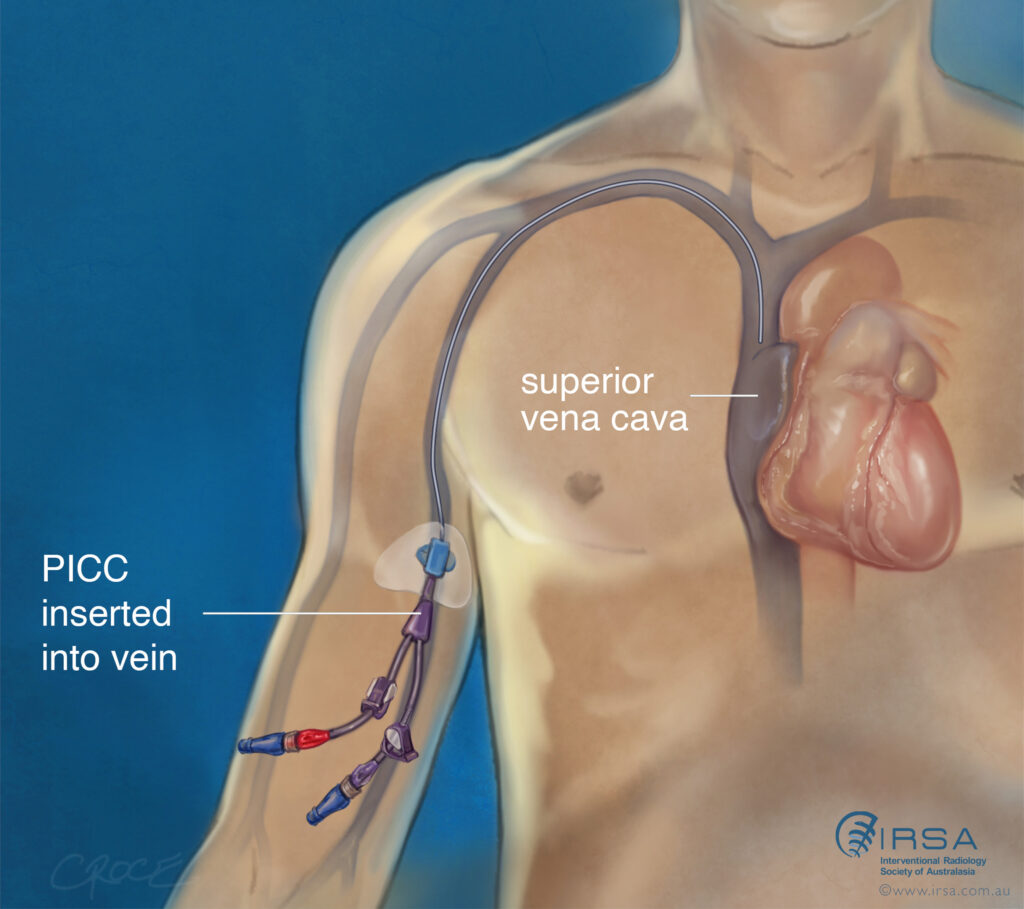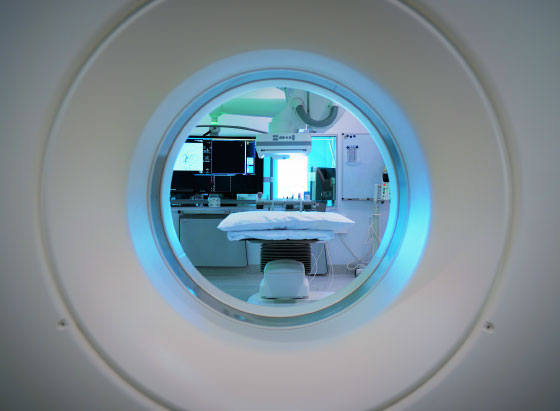WHAT IS PICC INSERTION?
A PICC is a long soft flexible tube (catheter) that is usually inserted into one of the veins in the upper arm. The tube is then advanced into a large vein next to the right side of the heart.
WHY WOULD MY DOCTOR REFER ME TO HAVE THIS PROCEDURE?
A PICC gives your doctor access to the large central veins near the heart. It is generally used to give medications or liquid nutrition. A PICC can help avoid the pain of frequent needle sticks (cannulation) and reduces the risk of irritation to the smaller veins in your arms.
A PICC is commonly recommended for:
- Cancer treatments. Medicines that are infused through a vein, such as chemotherapy and targeted therapy drugs, can be delivered through a PICC.
- Liquid nutrition or total parenteral nutrition (TPN). If your body can’t process nutrients from food because of digestive system problems, you may need a PICC to receive liquid nutrition.
- Infection treatments. Long term antibiotics and antifungals can be given through a PICC for serious or stubborn infections.
Other medications. Some medicines can irritate the small veins and giving these treatments through the PICC reduces that risk. The larger veins in your chest carry more blood, so the medicines are diluted much faster, reducing the risk of injury to the veins.
Once your PICC is in place, it can be used for other things, too, such as blood draws, blood transfusions and receiving contrast material before an imaging test.

Wondering If You Qualify for PERIPHERALLY INSERTED CENTRAL CATHETER (PICC) INSERTION?
How do I prepare for the procedure?
To prepare for your PICC insertion, you might have:
- Blood tests. Your doctor may need to test your blood to make sure you have enough blood-clotting cells (platelets). If you don’t have enough platelets, you may have an increased risk of bleeding.
- Imaging tests. Your doctor might recommend imaging tests, such as an ultrasound, to create pictures of your veins to plan the procedure.
- A discussion of your other health conditions. Tell your doctor if you have had breast-removal surgery (mastectomy), or a pacemaker insertion as that may affect which arm is used for placing your PICC. Also let your doctor know about previous PICC insertions, clots in the veins of your arm or chest, arm injuries, serious burns or radiation treatment. If you have renal failure and you may need a fistula created for dialysis, a PICC generally isn’t recommended on that side.
What happens during the procedure
Local anaesthetic is used to numb the area. The insertion procedure is like having a “drip” put into your arm, except that ultrasound is used to locate the vein and preparation takes longer as it is a sterile procedure. A specialised x-ray called fluoroscopy will be used to check the position of the PICC.
HOW LONG DOES THE PROCEDURE TAKE?
The procedure generally takes around 10 minutes.

What is the recovery
normally like?
After a PICC insertion, there may be some tenderness, bruising and minor bleeding in the area where the catheter enters your arm. It should go away within a few days.
As you adjust to life with a PICC, you’ll need to consider:
- PICC protection. Your doctor may recommend specific ways to protect the arm with the PICC. For instance, don’t lift heavy objects and don’t have blood pressure readings taken on the affected arm. Your doctor might recommend avoiding jarring activities with your arm, such as throwing a ball. Avoid submerging the PICC in water, such as might happen with swimming or taking a bath.
- PICC care. A nurse or other provider will show you how to care for your PICC. This might involve checking the area daily for signs of infection and flushing the line with solution weekly to keep it clear from clogs. It’s easier if you have someone to help you with PICC care. If you need help, you might consider hiring a home health care provider.
- PICC covers. You’ll need to cover your PICC when you take a shower, as the area shouldn’t get wet. Your doctor or nurse might provide a cover or you can buy one at a drugstore. Other PICC covers are available for daily use to protect the area or make it less obvious to other people.
What are the risks?
Contact your doctor right away if you notice any signs or symptoms of PICC complications, such as if:
- The area around your PICC is increasingly red, swollen, bruised or warm to the touch
- You develop a fever or shortness of breath
- The length of the catheter that sticks out of your arm gets longer
- You have difficulty flushing your PICC because it seems to be blocked
- You notice changes in your heartbeat or develop palpitations
What are the benefits?
- A PICC is more comfortable by sparing your veins from frequent needle sticks.
- A PICC can spare your veins from the irritating effects of certain IV medications.
- A PICC can be used in the hospital setting, nursing facility, or at home and can stay in place for weeks or months, if needed.
- A PICC can be used for many types of IV treatments.
- A PICC can be used to obtain most blood tests.
HOW LONG DOES IT TAKE TO RESPOND TO THE PROCEDURE?
Your PICC is kept in place for as long as you need it for treatment. PICC removal.
Your PICC can be removed when your treatment ends. To remove the line, a doctor or nurse gently pulls on the end of the catheter to remove it from your arm.
Find a Doctor
Our Doctor Finder is a comprehensive database of interventional radiologists practicing in Australasia.
Use the search fields to search based on geographic location or by area of practice.
